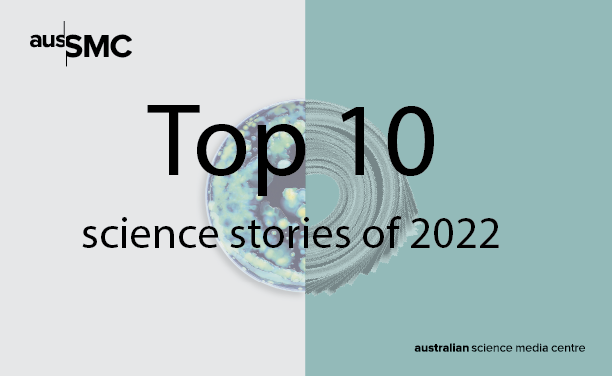Media release
From:

We ‘learned to live’ with COVID-19
2022 was the year Australia ‘learned to live’ with COVID-19, as restrictions were lifted, additional vaccine boosters were provided, and mandatory isolation periods for the infected were shortened and eventually abandoned altogether. Meanwhile, case numbers and deaths continued to rise as the dominant Delta variant of COVID-19 was eclipsed by Omicron variants, and Australia reached the grisly milestone of 10,000 deaths from the virus in July. Vaccines designed to tackle the original Alpha strain of COVID-19 were less effective in preventing Omicron infection, but still offered strong protection against severe disease, and Omicron-specific vaccines became available in October.
You can access the AusSMC's COVID-19 resources here

We continued “on a highway to climate hell”
Speaking at the COP27 climate summit in November, UN Secretary‑General António Guterres warned us that “we are on a highway to climate hell with our foot still on the accelerator”. And it was another grim year for the climate as we learned that levels of all three main greenhouse gases hit record highs in 2021, while sea-level rise, ocean heat and ocean acidification also set new records. The World Meteorological Organization (WMO) said the past eight years are likely to be the eight warmest on record, and that there’s now a 50/50 chance of passing the Paris Agreement threshold of 1.5°C above pre-industrial levels before 2026. The Intergovernmental Panel on Climate Change (IPCC) released two reports this year, one on climate change impacts and another on mitigation. Both suggested current pledges do not go far enough, and that serious, immediate action to cut emissions is the only way to avoid planetary catastrophe. As for COP 27, although progress was made on funding to help poorer countries deal with climate disasters, previous commitments to ‘phase out' coal power and fossil fuel subsidies were both watered down. However, 2022 was also the year Australia stepped up our climate commitments, and in June, the new Federal Government adopted a more ambitious target of a 43% cut in carbon emissions by 2030. In October we also joined the global pledge to cut methane emissions by 30% by 2030. But all those commitments were against the backdrop of another bleaching event on the Great Barrier Reef in March, likely a result of climate change, which led the UN to call for the reef to be placed on its list of World Heritage Sites ‘in danger’.
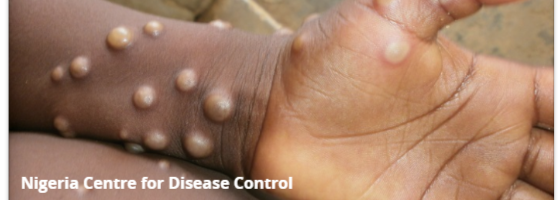
Monkeypox spread rapidly around the world
As if COVID-19 wasn’t stressful enough, this year brought an international outbreak of another viral infectious disease, monkeypox, recently renamed mpox by the World Health Organization (WHO). The disease has previously been found in several African countries, but a mutated form of the virus started to spread internationally this year, with the first case in the UK in early May. By the end of the month, 92 cases in 12 countries had been reported to the WHO, including the first case in Australia. In July, the WHO declared a public health emergency, and Australia quickly followed suit, declaring a ‘communicable disease incident of national significance’ (CDINS). By December, cases had reached 81,608 globally, with 59 deaths, while there were 143 confirmed or probable cases in Australia. Symptoms include a characteristic rash, fever, swollen lymph nodes and fatigue. Fortunately, existing vaccines for smallpox have proved effective in preventing the disease.
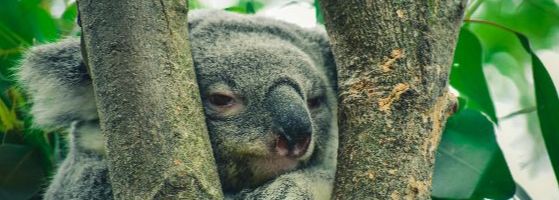
The koala was listed as an endangered species
In sad news in February, one of our most iconic and beloved native critters, the koala, was officially declared an endangered species by the Federal Government. In recent years, koala numbers have dropped dramatically, mainly as their habitat is lost to development, but also because of drought and the catastrophic Black Summer bushfires of 2019/20. Koalas are also affected by some nasty diseases, which have not helped. The new listing applies to koalas in Queensland, New South Wales and the Australian Capital Territory, while koala populations in South Australia and Victoria are thought to be in better shape. In response to this development, and Australia’s dismal historical record in preventing extinctions, the government launched its Threatened Species Action Plan in October. The plan aims to prevent any new extinctions of plants and animals, and to conserve at least 30% of Australia’s land for wildlife.
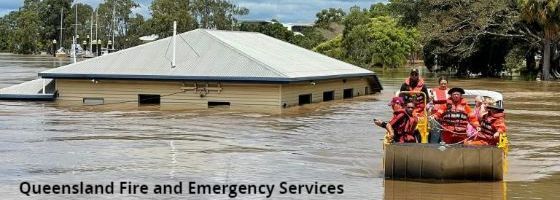
A triple dip La Niña disrupted thousands of lives as Australia flooded repeatedly
A rarely seen triple-dip La Niña weather system meant usually dry Australia was deluged with heavy rain throughout the year, resulting in widespread flooding as rivers broke their banks and intense rain caused flash floods across several states. Hardest hit were New South Wales and Queensland, with flooding reported in February, March, May, July, October, and November, although Victoria, Tasmania and South Australia also saw serious floods. Thousands of Aussies were evacuated from their homes, and sadly at least 20 people died. Australia wasn’t alone in experiencing catastrophic floods this year - in June, record-breaking floods in Bangladesh affected 7.2 million people, while flooding in Pakistan between June and October submerged a third of the entire country, affecting 33 million people, leaving millions homeless and killing 1,739.
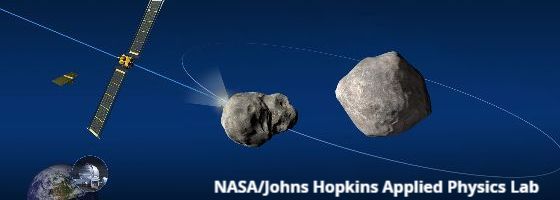
NASA successfully deflected an asteroid, while another revealed its secrets
Don’t look up, because you won’t catch a glimpse of an asteroid called Dimorphos that NASA successfully deflected in September, as it was never on a collision course with Earth in the first place. Rather, the Double Asteroid Redirection Test (DART) mission was designed to show that an asteroid can be knocked off course by smashing a spacecraft into it, should one ever be headed our way. Following the impact 11 million kilometres from Earth, NASA astronomers saw the orbit of Dimorphos change by 25 times more than the minimum the scientists had hoped for, making the mission a resounding success. Dimorphos wasn’t the only asteroid to hit the headlines this year as another, Ryugu, revealed some secrets of the early solar system from samples dropped in the South Australian outback two years earlier, including the presence of water, and 20 amino acids - the building blocks of life!

The world’s population hit 8 billion, despite rapidly falling sperm counts
In November, the UN announced a huge milestone for humanity as the world’s population hit 8 billion, just 12 years after reaching 7 billion. The population boom is likely to continue, the UN said, and we’re expected to reach 10.4 billion humans in the 2080s before numbers start to decline. This is despite rapidly decreasing fertility among men around the world, whose sperm counts fell by an average of 62.3% between 1973 and 2018, according to international research published in November. Why sperm counts are dropping remains a mystery, although it’s been suggested that unhealthy lifestyles and exposure to a cocktail of chemicals could be to blame. Meanwhile, Australia reported our lowest birth rate in more than a decade, with the number of bubs born down by around 7,100 (2.3%) between 2019 and 2020.
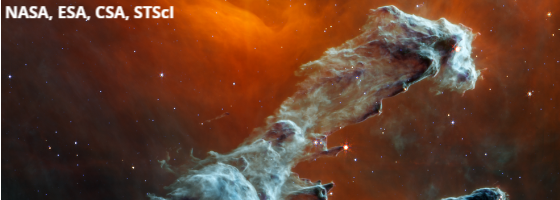
The James Webb Space Telescope brightened our days with some stunning images from space
Launched late last year, the James Webb Space Telescope (JWST) started beaming back some spectacular images in 2022, showing stars, planets and whole galaxies in unprecedented detail. The very first image from JWST in February was a little underwhelming, but only because it was part of the telescope’s three-month alignment phase. Once it got going, we were blown away in July as US President Joe Biden unveiled the first incredible image of a myriad of galaxies, some of which are so far away, we were effectively looking 13 billion years into the past. The stunning images kept on coming, including the Southern Ring Nebula, the Carina Nebula and five galaxies known as Stephan’s Quintet in July, some gorgeous shots of Jupiter in August, Mars and Neptune in September, and the extraordinary Pillars of Creation just in time for Halloween. Meanwhile, in December, construction began on the world’s largest radio telescope, the Square Kilometre Array Observatory (SKAO), in Australia and South Africa.

An influential Alzheimer’s study was reported to be falsified, but a new drug showed early promise
In August, we learned that an influential scientific paper from 2006 which reported the results of a trial of an Alzheimer’s disease drug candidate called Simufilam may have been fraudulent, potentially calling the last 16 years of research on the condition into question. It was one of the key studies supporting the theory that a protein called beta amyloid, which builds up in clumps in the brains of Alzheimer’s patients, causes the disease, a theory that has been the basis for millions of dollars’ worth of Alzheimer’s research since. But US neuroscientist and doctor, Matthew Schrag, spotted some manipulated images in the paper after a tip off from an attorney involved in a case against the drug’s manufacturer, Cassava Sciences. Despite this blow for the beta amyloid theory, it hasn’t been written off completely, as a drug that removes the protein from the brain, lecanemab, showed promise in slowing cognitive decline in a trial published in November.
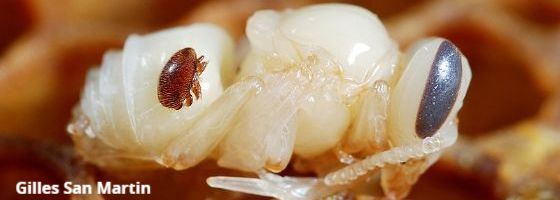
A honeybee killer, the varroa mite, arrived in Australia
After years of successfully keeping them out of the country, a parasite of honeybees called the varroa destructor mite was detected in biosecurity hives in Newcastle in June. The mites were subsequently found at several New South Wales properties, which were quickly declared exclusion zones by authorities. Moves to contain the outbreak included the destruction of 600 hives containing millions of bees, and a ban on beekeepers moving bees and beehives. The varroa mite is thought to play a role in the poorly understood collapse of bee colonies around the world, known as colony collapse disorder. It’s estimated varroa could cost Australia between $70m and $14.2bn annually if not contained, because as well as honey, bees provide essential crop pollination services. Fortunately, at the time of writing, the varroa mite is not thought to have spread to any other Australian states.



 Australia
Australia
